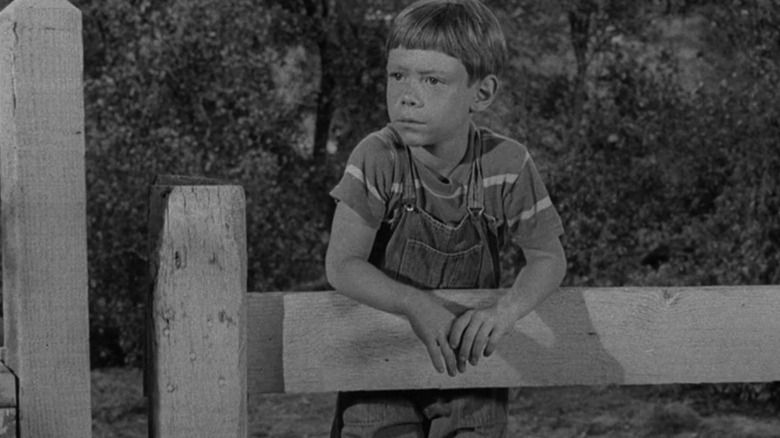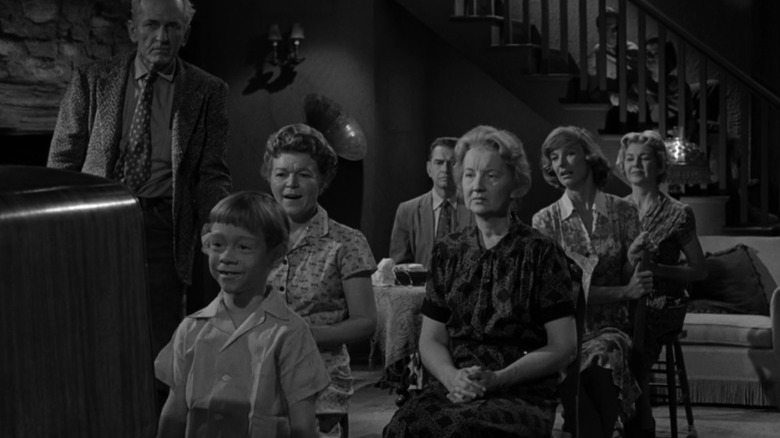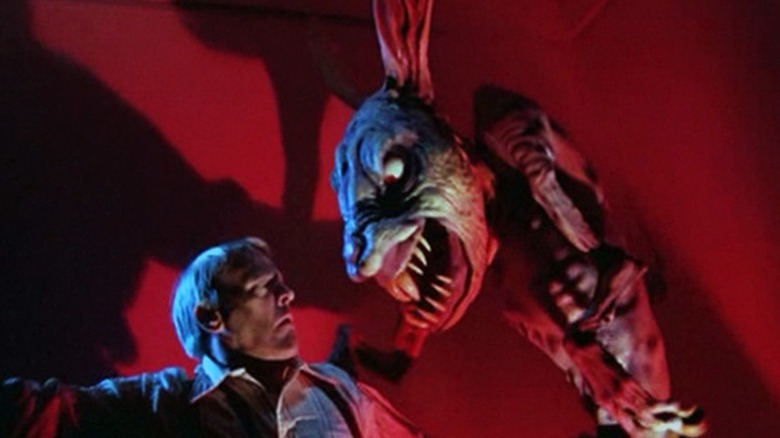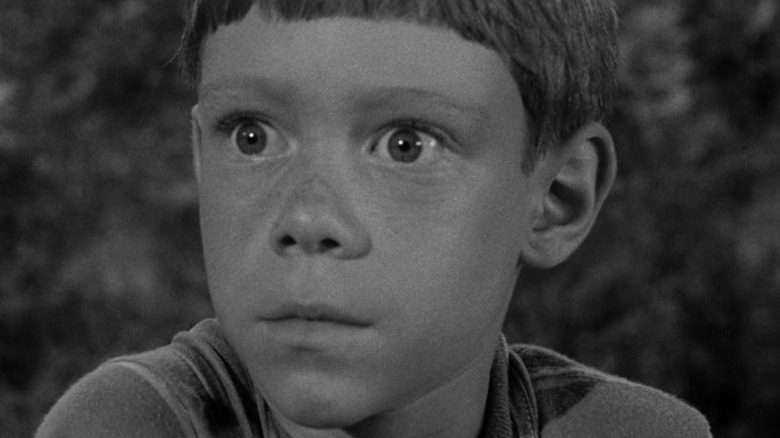The Twilight Zone Film Adaptation Rod Serling Never Got To Finish
Rod Serling's classic sci-fi series "The Twilight Zone" is so legendary, its reputation has stood the test of not only time, but countless reboot series and a nightmarish movie adaptation. With Serling at the helm, the show that aired from 1959 to 1964 served as one of the foundational building blocks for humanistic science fiction as we know it today. Nothing that has come since can erase its importance, but a project Serling was working on shortly before its death still begs the question: in the dimension of imagination we call "The Twilight Zone," what would a Serling-made adaptation of the series look like?
He was working on a movie before his death
The sci-fi sermonizer himself offered a clue to what the project might look like in a back issue of the comic book "Planet of the Apes." The interview with Marvel Comics, released months before his death in 1975, is titled "Rod Serling Recalls." In it, the writer looks ahead to a future project that never came to pass:
"I'm on my third draft of a feature film based on Jerome Bixby's short story, 'It's a Good Life.' We did it originally on 'Twilight Zone' but now we're doing a full-length version. Alan Landsburg, who produced 'Chariots of the Gods,' is producing it. It's in the fantasy-horror genre."
"It's a Good Life" is considered one of many series highlights to come from the original five-season run of "The Twilight Zone." The story follows a six-year-old boy named Anthony (Bill Mumy, a freckled little Ron Howard type) whose godlike powers — and inability to regulate the immature emotions that drive them — keep his community under his thumb. When the episode opens, Anthony already has his parents (his mom played by a young Cloris Leachman) and neighbors under his command, and we soon learn he banishes anyone who doesn't play along with his rules to an inescapable wasteland called "the cornfield."
The short story was even creepier
Though its originality is undeniable, the thrills and chills of Serling's short-form take on "It's a Good Life" have dulled a little with time. Serling frequently adapted from short stories for "The Twilight Zone," and I can see how he could imagine this one improving with the technology available in 1975 versus its original run in 1961.
The original episode ends with one of the family's neighbors, fed up with the kindergarten-age boy's totalitarian regime, breaking one of Anthony's rules by singing a song. Anthony responds by turning him into a creepy human-Jack-in-the-box toy hybrid, then sending him to the cornfield. Bixby's version was even creepier.
In it, readers are only told that Anthony "thought Dan Hollis into something like nothing anyone would have believed possible, and then he thought the thing into a grave deep, deep in the cornfield." Whatever the thing is, it leaves the adults in the room more scared than ever of the boy's powers, and more sure than ever that they need to smile through their terror to keep him happy. The story's title comes from the group's final assertion, through a cold sweat and in the face of a snowstorm caused by Anthony, that they're all having a really good day.
That unimaginable yet frightening "something" the child imagines could have looked really terrifying in a '70s version of the story, as it sounds like a chance for imaginative creature design to create a totally unique abomination. A feature adaptation also could have done away with some of the decade-specific melodrama of the original episode, revamping a classic for a new generation. Instead, we ended up with some less-than-stellar variations on the story. Joe Dante's take on "It's A Good Life" for "Twilight Zone: The Movie" is quite good, but it, like the rest of the film, will forever be marred by the terrible incident that claimed several lives on the film's set. Taken on its own, Dante's version is a colorful, cartoonish, and decidedly '80s version of the story, one that imagines Anthony as an animation-loving kid who doesn't seem to realize he's scaring everyone.
An exercise in imagination
The story of "It's a Good Life," with its focus on forced assimilation and immature authority figures, has never stopped capturing audiences' attention in the 60-plus years since American TV viewers first saw it. The story was revived for a 2002 sequel episode, re-imagined for one of the best hours of Charlie Brooker's Serling-inspired show "Black Mirror," and almost certainly influenced another genre-defining artist, frequent creepy kid employer Stephen King.
If Serling had made the film with Landsburg, the prolific TV movie producer who also inexplicably moonlighted as a metaphysics author, what would it have looked like? Instead of counting "The Omen" sequels, would we be counting "It's a Good Life" sequels? Would the film have made a star out of one of its actors, inspired a Stephen King classic, or caused a trend toward on-screen stories about superpowers decades before our own? Unfortunately, it never came to pass. This and other dizzying theoreticals can only be explored in — say it with me, folks — "The Twilight Zone."



